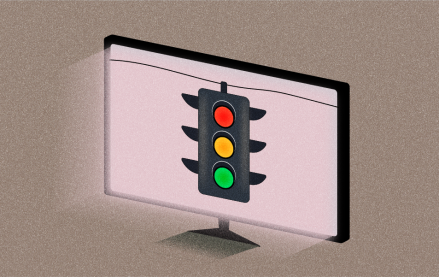The search for the 30-second spot of the Internet has mostly proved fruitless, but it might just have found its equivalent of the full-page magazine ad.
Hearst is set to roll out the IAB Portrait, the huge ad unit — it covers a third of the page — developed by AOL. The ad will run on the Websites of Hearst titles like Cosmopolitan, Esquire, Redbook and others. The hope is the ad will draw the kind of big brand advertisers — along with big brand ad rates — that the Web has sorely lacked.
It’s also a big endorsement of the Portrait, which was developed by AOL as Project Devil. Hearst is the first non-AOL publisher to adopt the unit. AOL has made all its pages Devil-ready, although the ad is a tiny fraction of its inventory, executives admit. Still, AOL is getting extremely high CPMs for the placements, as much as $60.

That will come down as more publishers adopt the format, but not by much, said Greg Rogers, CEO of Pictela, the AOL business unit that developed the unit.
“We’re seeing that price doesn’t seem to be a huge limiting factor,” he said. “The whole pricing discussion disappears.”
The units hold out hope that big brand publishers will be able to find a way out of the commoditization trap that has snared most Web display advertising. In an age of near limitless inventory and audience-targeting systems, online ad space is a buyer’s market like never before. The Portrait unit promises to combine the rich imagery of a magazine ad with the functionality like maps and video that sets the Web apart.
“We’ve been very interested in getting other publishers to adopt this format because we realize to really change the paradigm around brand advertising, it can’t just be AOL,” Rogers said.
With $60 CPMs and big brands like P&G, Macy’s and the auto manufacturers running campaigns, what’s holding publishers back? Mostly the tech. Implementing such a large unit requires redoing sites to accomodate it. That brings up the issue of what’s served in that space when there isn’t an ad to fill it. AOL is counseling publishers to get around it by hard-coding the ad into their sites and selling it initially as a sponsorship. The long-term solution is a dynamic adjustment of the page in cases when there aren’t Portrait ads.
AOL has other publishers readying adoption of the Portrait, according to Rogers, who called the Portrait’s reception “one of the most impressive things I’ve seen in 10 years in the industry.” Whether that momentum continues remains to be seen as the Internet ad industry has a long history of getting hung up on standardization and business process snags when it comes to new ad approaches. The status quo has more often than not won out.
“One of the limiting factors is if it’s only AOL that hosts this format brand advertisers won’t be able to serve this across the Web,” said Rogers. “The more publishers get on board, the greater the potential.”
More in Media

What publishers are wishing for this holiday season: End AI scraping and determine AI-powered audience value
December 22, 2025
Publishers want a fair, structured, regulated AI environment and they also want to define what the next decade of audience metrics looks like.

Media giant Essence launches a marketplace for Black women-led brands
December 22, 2025
Essence has launched WeLoveUs.shop, a new online marketplace dedicated to Black women-led brands.

In Graphic Detail: The state of AI referral traffic in 2025
December 22, 2025
The stats reveal a new audience pipeline forming outside of traditional search and social platforms.





